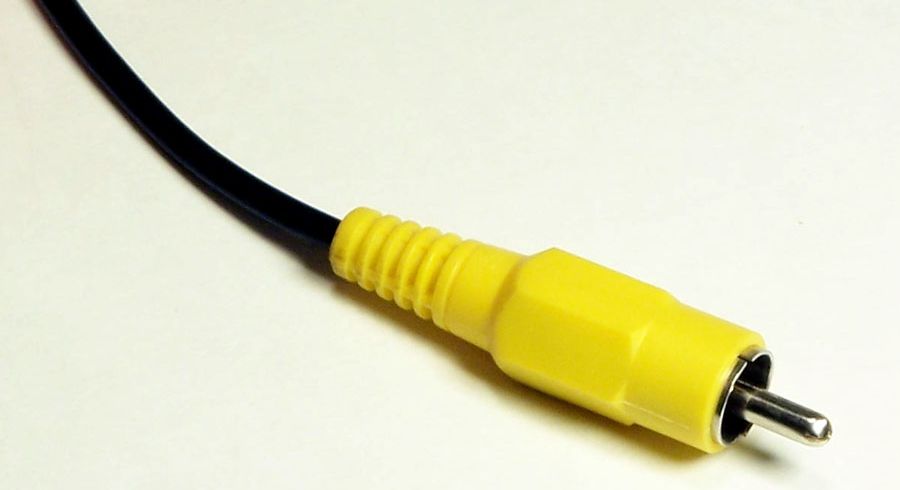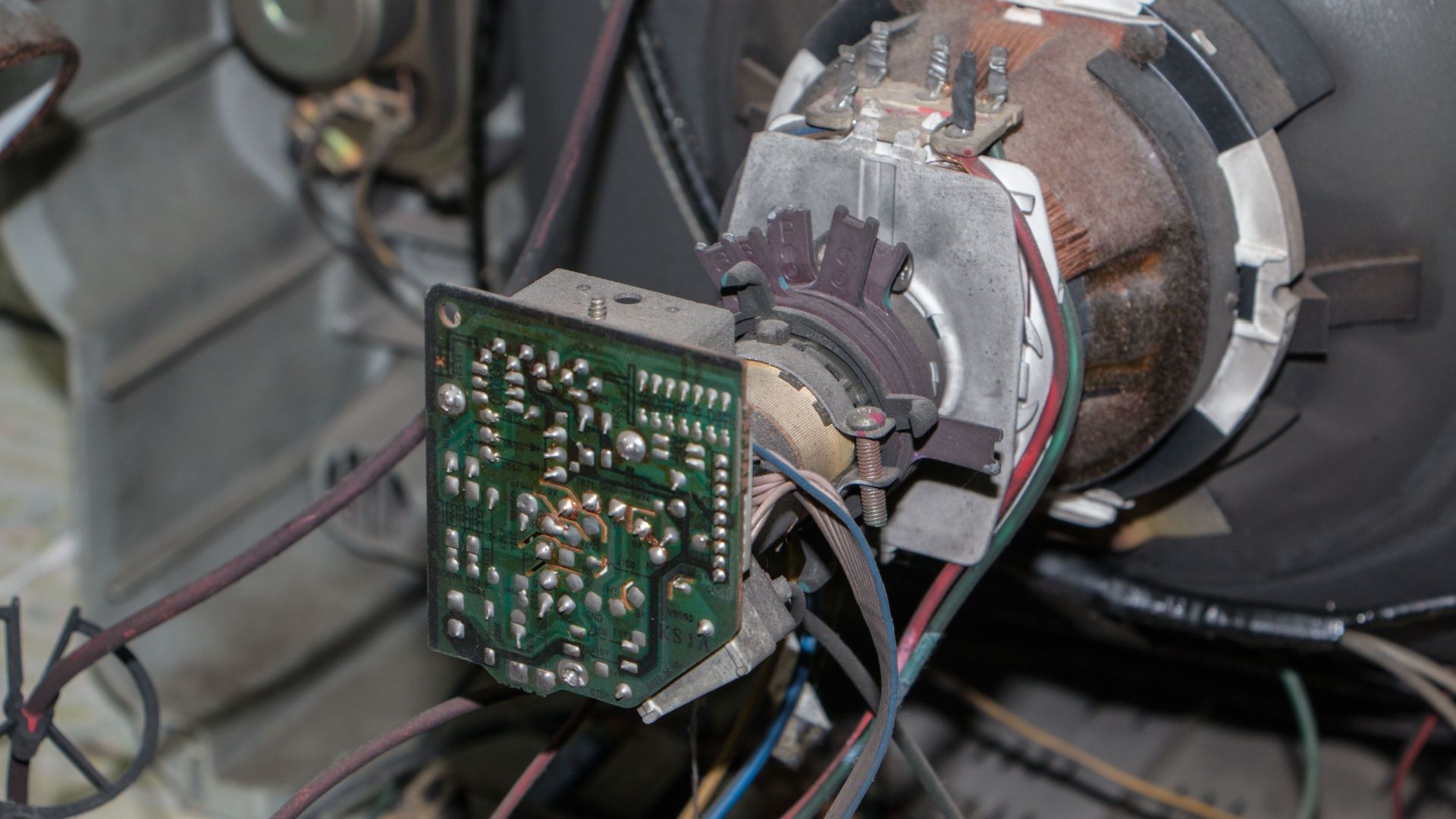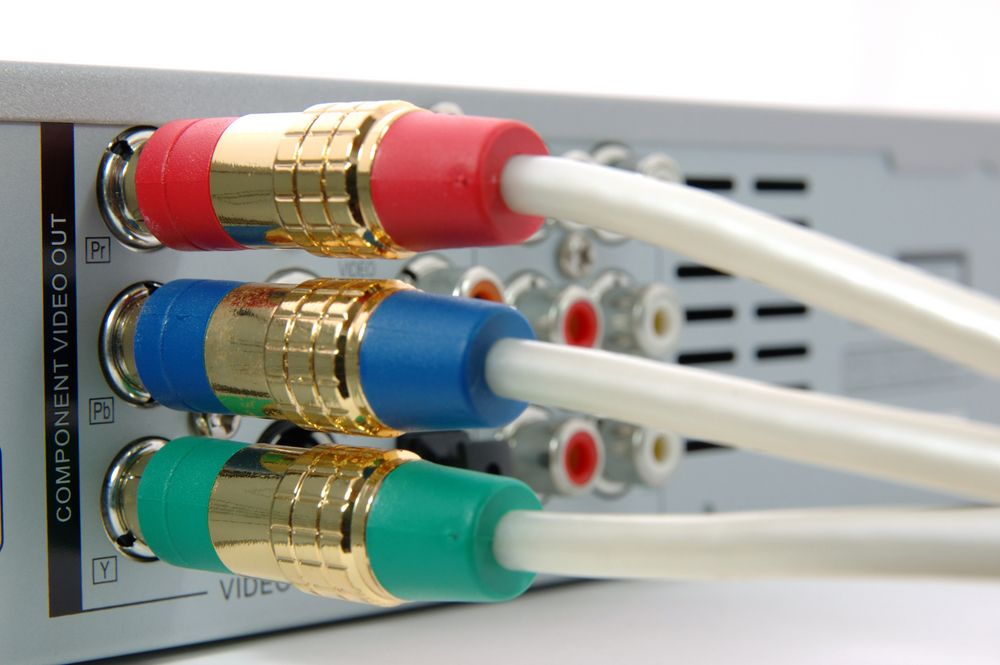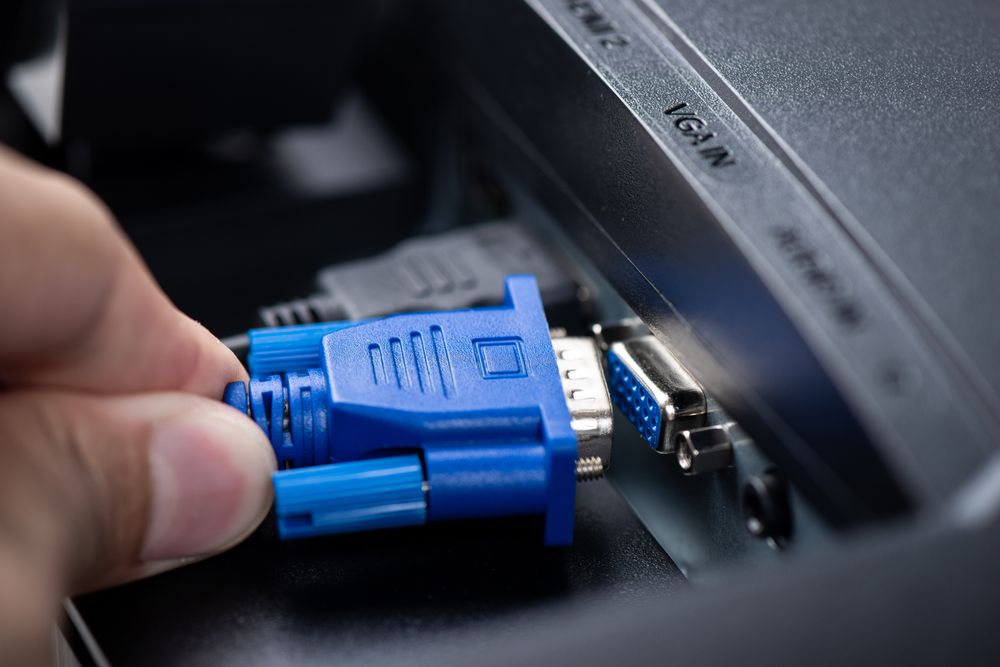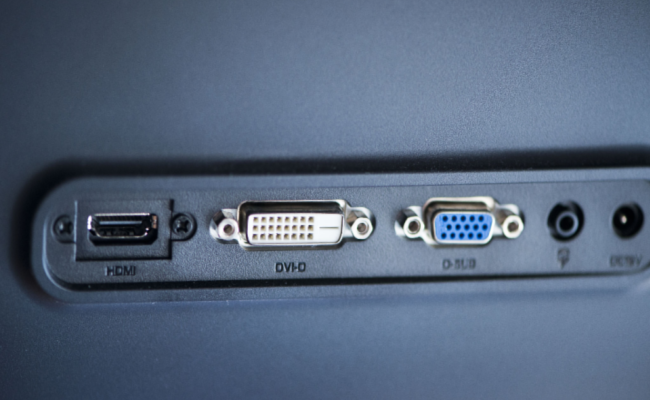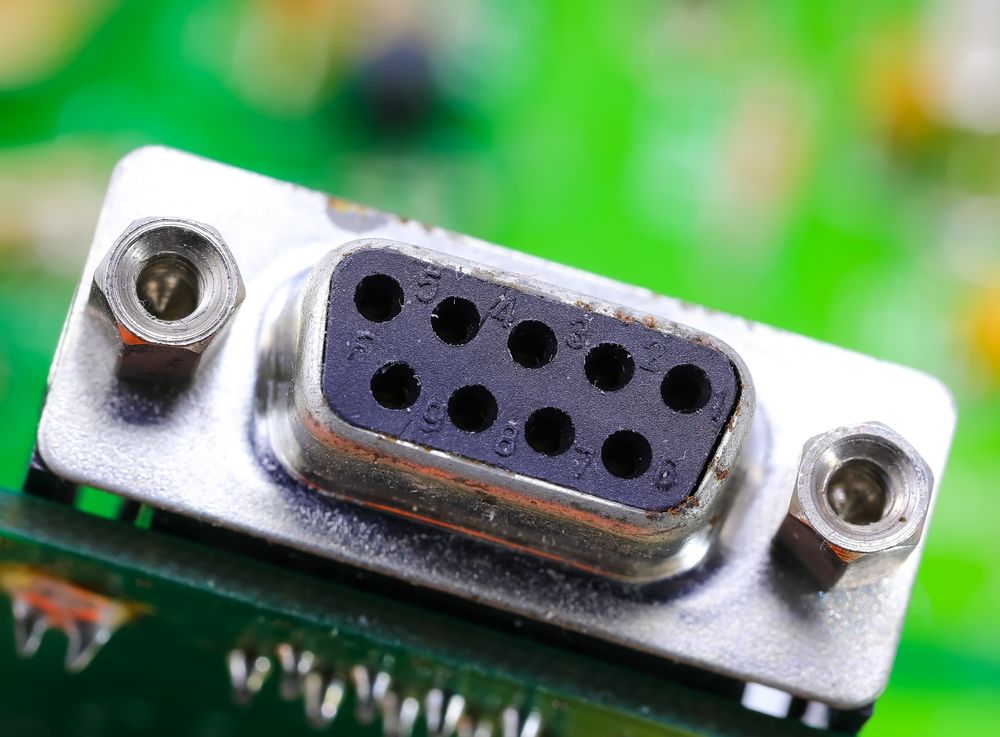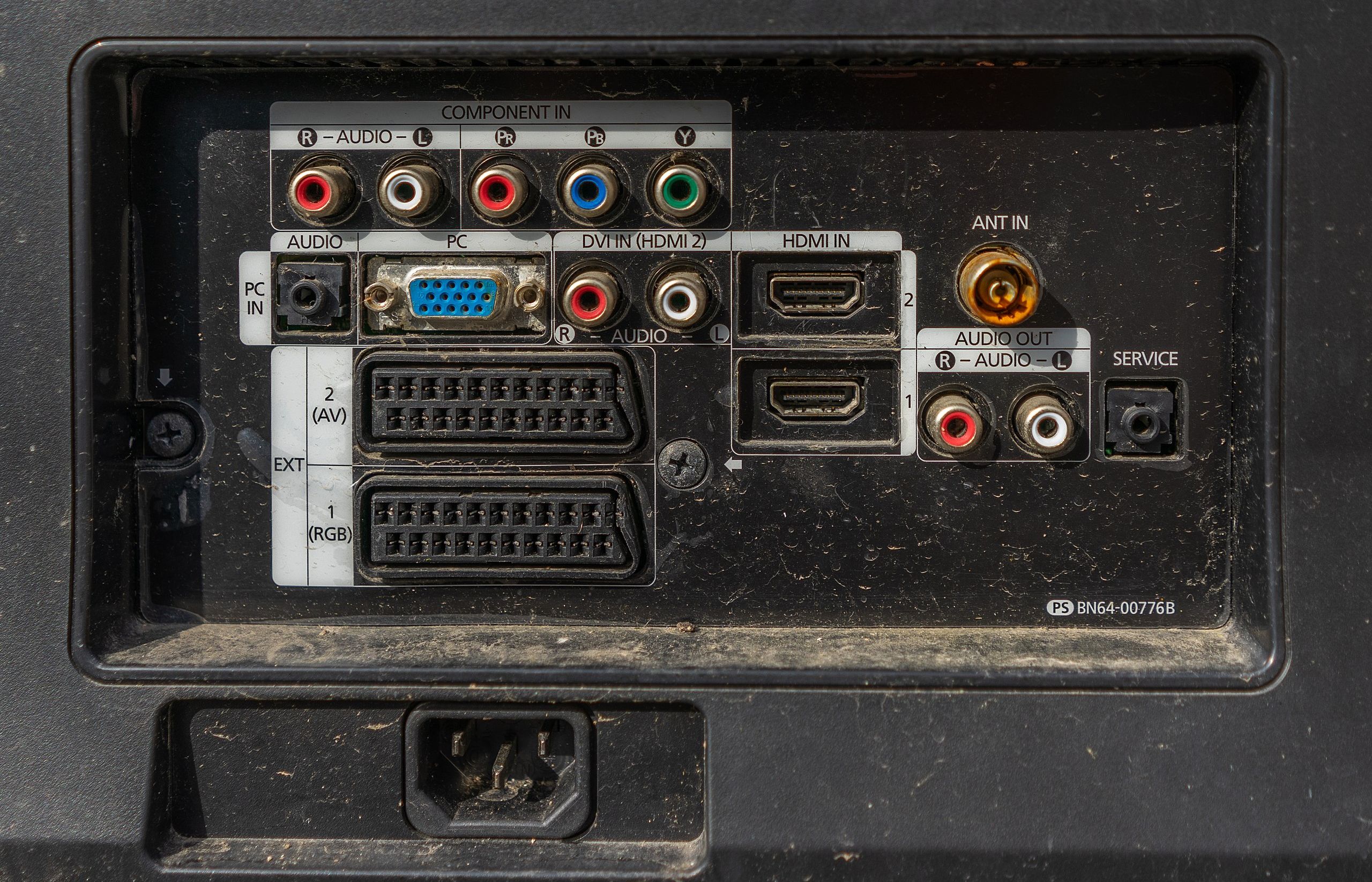As home theater technology evolves, your video receiver may still include a few ports that feel like relics. Once essential for connecting devices like VCRs and early DVD players, many ports are now outdated and have been replaced by more modern wiring.
Still, understanding what they were used for can help you make smarter upgrade decisions—or just scratch that nostalgic tech itch. Here are seven outdated ports and their original purposes.
1
Composite Video (RCA—Yellow Plug)
You’ve probably seen this port alongside the familiar white and red audio jacks. That yellow jack is a composite video port, and it has a distinct role.
Composite video transmits standard-definition analog video—typically at 480i resolution—but does not carry audio. That’s why it was usually paired with the red and white audio ports.
This connection was standard on devices like VHS players, older digital cameras, early DVD players, and retro gaming consoles like the Nintendo 64 and PlayStation 2.
While it served its purpose well back in the day, composite video been phased out in favor of HDMI, which offers higher resolutions and combines both audio and video into a single cable. This made connecting and viewing video simpler as content became offered at higher resolutions.
Yet, composite video ports are still important if you want to fire up an old gaming console or watch classic VHS tapes. If your devices don’t support composite video, you can easily find an adapter to bridge the connection.
2
Component Video (Red, Green, Blue RCA Plugs)
While the yellow ports may be familiar, you’ve probably also seen red, green, and blue (often referred to as RGB) ports near it. These are component video ports, which serve a similar yet more advanced function compared to composite video ports.
Unlike composite video ports, which were limited to 480i resolution, component video supported resolutions of up to 1080i. However, component video does not support modern digital resolutions such as 4K, HDR, or copy protection (HDCP).
To achieve a better viewing experience, component video utilizes a three-cable analog connection that splits the video signal into separate channels, resulting in improved picture quality compared to a single composite cable. This ensures that there is no interference or degradation between the signals.
Additionally, separating the signals eliminated the need for a complex encoding and decoding process, resulting in more detailed images.
You can find these ports on progressive-scan DVD players, early Blu-ray players, cable boxes, and gaming consoles such as the Xbox 360 and PlayStation 3. Yet, with newer gaming consoles and ways to consume content, connecting through component video ports is no longer required.
3
S-Video (Separate Video)
S-Video (Separate Video), also known as Y/C, is an analog video connection standard that transmits signals over two separate channels: one for luminance (brightness) and one for chrominance (color). By separating the signals, it provides a better image quality compared to composite video, which sends both signals together.
You would find S-Video support in older devices such as DVD players, televisions, camcorders, and gaming consoles. However, most of these devices switched to HDMI since it supports higher resolutions and carried audio, unlike S-Video.
Additionally, S-Video was inferior to SCART RGB when compared since it offered a cleaner and sharper picture. This was because SCART RGB separates the color information into three distinct signals, while S-Video only does two.
Yet, if you still want to use S-Video because you have older devices, you can easily find converters to connect it to newer accessories and equipment.
4
Coaxial Digital Audio (Orange RCA Plug)
While video has multiple dedicated ports, so does audio. On older devices, a separate cable was required to transfer audio, and that’s where coaxial digital audio came into use.
Often recognized by its signature orange color, the coaxial digital audio port uses a single RCA cable to transmit digital audio signals—including Dolby Digital and DTS—from a media player to a receiver. These ports are commonly found on DVD players, set-top boxes, CD players, and surround sound systems.
While coaxial may not be the most popular audio connection currently, it can still be found on the back of certain AV receivers, integrated amplifiers, and TVs. However, like many older ports, it was replaced by HDMI, which supports newer and higher-quality audio formats.
Still, coaxial digital audio hasn’t entirely become extinct, with audio lovers and owners of older hardware often sticking with it because their device still relies on it.
5
VGA (Video Graphics Array)
While HDMI and USB-C have replaced the VGA port in modern devices, it was once the standard for connecting high-resolution displays. However, the connector was bulky and limites to at most 1080p.
Unlike HDMI or USB-C, VGA uses a 15-pin analog connector that transmits only video—not audio. If you wanted to transfer audio, you would have to connect another cable capable of doing so.
Additionally, plugging into the VGA port wasn’t the easiest task—you had to plug the connection in and then secure it by tightening the screws on both sides of the connector. If you didn’t, the connector could loosen, causing it to disconnect.
You can primarily find the VGA port on older computers and laptops, but they also appeared on televisions and projectors in the early 2000s. The primary use case for this port was to connect a computer tower to a monitor for viewing content or a laptop to a projector for a wider viewing experience.
However, as digital technology evolved, VGA quickly became outdated. It couldn’t match the clarity of digital signals, since it transmits analog signals that are more vulnerable to quality degradation from noise and signal loss, especially over long distances.
Although largely phased out, modern adapters that convert VGA to HDMI are still widely available. This is ideal to have if you want to connect older computer towers to newer displays to play older games that may not run on modern systems.
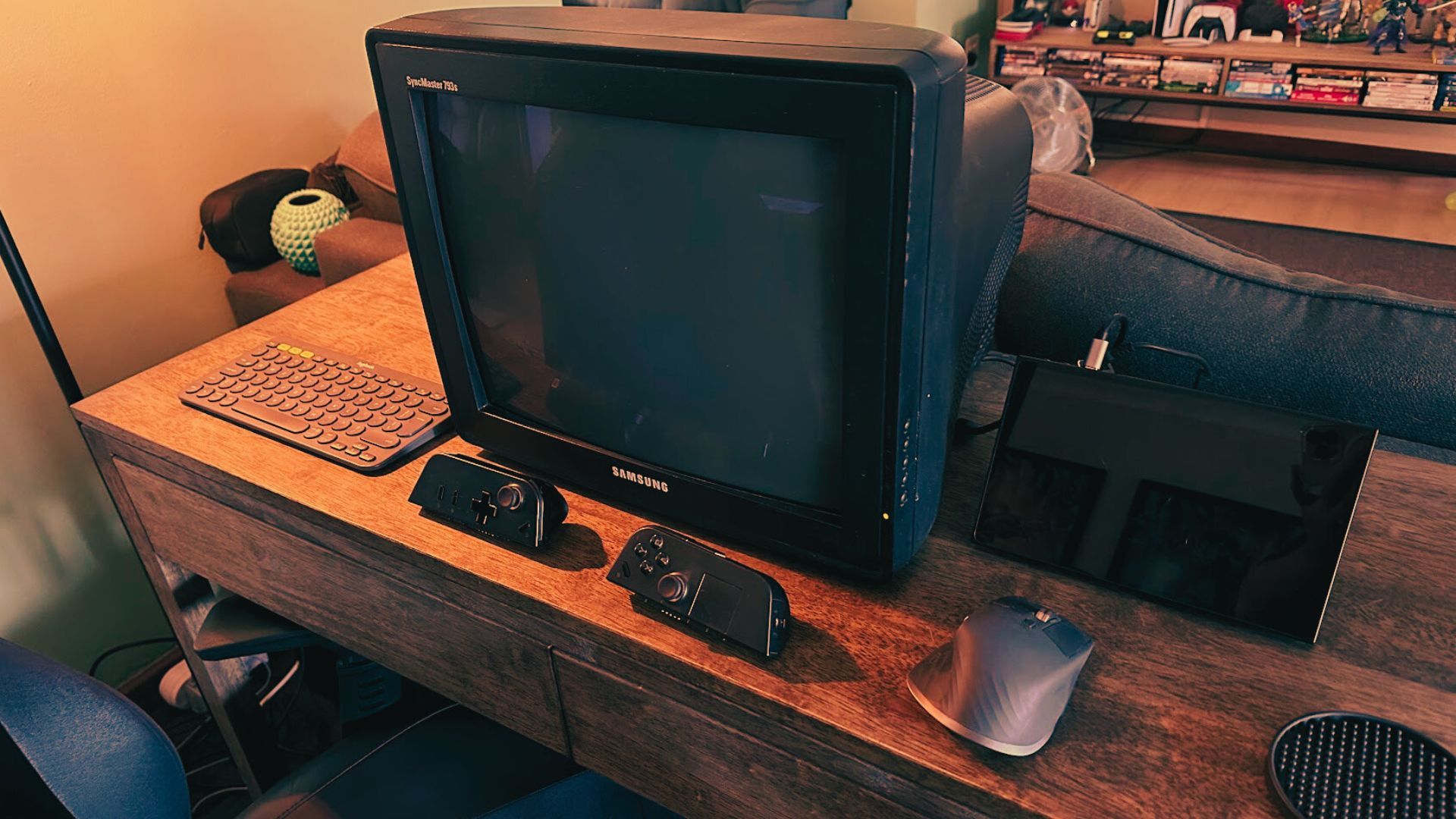
Related
How an Old CRT Monitor Turned My Handheld PC Into the Perfect Retro PC Gaming System
The answer was retro-futuristic.
6
DVI (Digital Visual Interface)
The Digital Visual Interface (DVI) is a video interface standard designed to transmit high-quality video, up to a resolution of 3840 × 2400 (WQUXGA) at 30 Hz, from a single source to a display device. This included connecting a computer or DVD player to a monitor, projector, or television.
It was created to replace VGA by offering a cleaner digital signal instead of an analog one; however, DVI-A fully supports analog signaling.
With these improvements, DVI became a standard interface on PC graphics cards and LCD monitors throughout the 2000s. It was also found on early high-definition TVs, DVD players, and home theater equipment before HDMI became widely adopted.
Compared to VGA, DVI offered a significant improvement by supporting digital video signals with sharper image quality and fewer issues, such as ghosting or signal degradation. Still, it had its drawbacks as it did not support audio, requiring a separate cable for sound, and its bulky connector wasn’t ideal for tight spaces behind TVs or receivers.
Eventually, HDMI and DisplayPort replaced DVI in most setups. These newer formats were more versatile than DVI, offering higher resolutions, faster refresh rates, integrated audio, and support for advanced features like Ethernet and Audio Return Channel (ARC).
That said, DVI hasn’t entirely become extinct since it’s still commonly used on some monitors, desktop motherboards, and discrete graphics cards.
7
RS-232 (Serial Port)
RS-232—short for Recommended Standard 232—is a serial communication standard dating back to the 1960s. It is widely used to connect computers to external devices, such as modems, printers, mice, and industrial equipment.
Connections were typically made through DE-9—often called DB-9—or DB-25 connectors, which were both large ports with rows of pins.
RS-232 sends data serially—one bit at a time—over a single data line, along with control lines to manage communication flow. However, speeds were relatively slow, topping out at around 115 kbps.
When it was more commonly used, RS-232 was used for dial-up internet connections via modems, early computer mice and keyboards, barcode scanners, cash registers, point-of-sale systems, and network configuration for routers and switches through console cables.
What made it popular was its reliability, since it was simple, with low-overhead, and effective over short distances. It doesn’t require complex drivers or high-speed chipsets, making it ideal for embedded systems where stability mattered more than speed.
Like many older standards, RS-232 was eventually phased out in favor of faster, more versatile alternatives, such as USB, Ethernet, Bluetooth, and Wi-Fi. These modern technologies offer higher speeds, smaller form factors, and support for hot swapping, plug-and-play functionality, and power delivery—all features that RS-232 lacked.
Still, RS-232 ports can occasionally be found on AV receivers and projectors for automation or firmware updates, as well as in scientific instruments, medical equipment, older card readers, cash registers, and industrial control panels.
What to Do if You Still Have These Ports
While these ports are outdated, some people may still hold on to older gear that uses them—not because of the ports themselves, but because the device still gets the job done.
In these cases, adapters can help bridge the gap between old and new tech. Most modern displays and speakers support HDMI or USB-C, so depending on the port you’re trying to use, you’ll want to find a compatible adapter to make the connection possible.
That said, just because an adapter exists doesn’t mean it will work flawlessly. In many cases, adapters can cause issues—from signal degradation to compatibility hiccups—resulting in choppy signal transfers.
If you’re experiencing constant issues, it may be a sign to consider upgrading your device. Luckily, it has become easier to transfer data and settings from older devices to new ones.
Still, upgrading isn’t always necessary. If your current setup meets your needs, there’s no harm in sticking with it. No matter your device’s ports, there is most likely an adapter out there that can connect it to modern accessories.
Every port on any device has a purpose, and if it is present on older versions but not newer ones, it usually means a more efficient way to do the task was created.
However, it isn’t essential to know what every port does, but it is a great way to get the most out of your devices. As more modern technologies use USB-C or HDMI for their versatility, it’s still worth understanding what older ports did that paved the way for newer ones.


